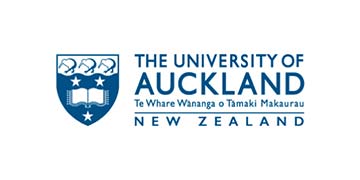University of Auckland: Crowdfunding hard work for campaigners
Researchers Caitlin Neuwelt-Kearns and Dr Tom Baker from the University of Auckland’s School of Environment interviewed 15 people who had run online campaigns on NZ’s crowdfunding site ‘Givealittle’.
Of the 15 campaigners interviewed, eight were running campaigns for people with cancer, while others included neurological diseases, paraplegia and anorexia nervosa.
The difference in success between the campaigns was significant: amounts raised ranged from $1,000 to $90,000, but most fell into the $10,000 to $30,000 range. Just two raised more than $50,000.
A majority of people running campaigns – 9 – said the money raised largely came from ‘friends/family’ rather than strangers.
“Our research shows that it’s difficult getting people to donate money for someone they don’t actually know. Funders are often not a faceless crowd at all—they are family, friends and acquaintances,” Dr Baker says.
Campaigns for personal health expenses have become the largest and fastest growing segment of donation-based crowdfunding around the world. With cuts and pressures on public budgets in recent times, crowdfunding has become a ‘gap-filler’ for publicly funded healthcare.
And New Zealand is not immune from having gaps in its healthcare system, with regular criticism for limited and delayed access to new cancer medications in comparison to Australia and the United Kingdom being one example.
But attempts to appeal to acquaintances and strangers depend on campaigners’ ability to ‘market’ illness in ways that resonate with the crowd and, therefore, navigate what Dr Baker describes as “a mine-field of social biases about who is deserving of assistance and who isn’t”.
Demonstrating ‘deservingness’ is a key requirement for a successful crowdfunding campaign and one way participants in the study did that was by describing the funding recipient as ‘hard-working’ and ‘community-minded’.
A lack of choice was also foregrounded by fund-raising campaigns, and campaigners used phrases such as ‘through no fault of their own’ or ‘bad luck’ to establish the recipient as the subject of misfortune, rather than personal irresponsibility, and therefore deserving of care.
The importance of ‘choice’ as a rhetorical framing was seen to affect the success of a campaign, with some illnesses more widely understood as resulting from ‘bad luck’ than others. While $90,000 was raised for a child with a rare form of cancer in just three weeks, a mother raising money for her child’s anorexia nervosa treatment described the “uphill battle” of fund-raising for a misunderstood and often misrepresented illness, raising just $3,000 over six months.
Constructing these campaigns was often seen to be time- and energy-consuming, and some participants reflected on how much effort went into crafting the perfect narrative. Further, work on the campaign didn’t stop once the money came in – many campaigners felt obligated to their donors to carefully account for how the money was spent and provide updates.
At a time when people are already juggling heightened emotions, medical appointments, and all else that comes with having an unwell loved one, this can be a significant burden – particularly for those who struggle with literacy.
“You should just be worrying about having to get this person well and healthy and make the most of every day with one another, not having to try and struggle to raise funds and lead a campaign,” one campaigner said.
The researchers say the study points to the growing importance of crowdfunding for healthcare, but warn there are equity-related issues with this approach to funding medical costs.
“This is care provided not through citizenship or residence rights but by being able to persuasively ‘market’ someone as worthy of funding,” Dr Baker says.
“We think there are problems with that approach and that concerns are likely to grow as crowdfunding grows.”

